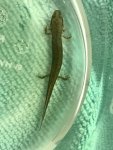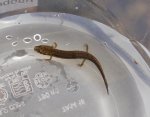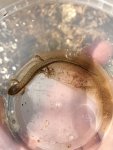-
Did you know that registered users see fewer ads? Register today!
Salamander ID
- Thread starter wulfgar
- Start date
- No one is chatting at the moment.
-
Shane douglas:with axolotls would I basically have to keep buying and buying new axolotls to prevent inbred breeding which costs a lot of money??+1
-
Thorninmyside:Not necessarily but if you’re wanting to continue to grow your breeding capacity then yes. Breeding axolotls isn’t a cheap hobby nor is it a get rich quick scheme. It costs a lot of money and time and deditcation+1
-
Clareclare:Would Chinese fire belly newts be more or less inclined towards an aquatic eft set up versus Japanese . I'm raising them and have abandoned the terrarium at about 5 months old and switched to the aquatic setups you describe. I'm wondering if I could do this as soon as they morph?+1
Clareclare:
Would Chinese fire belly newts be more or less inclined towards an aquatic eft set up versus...
+1




